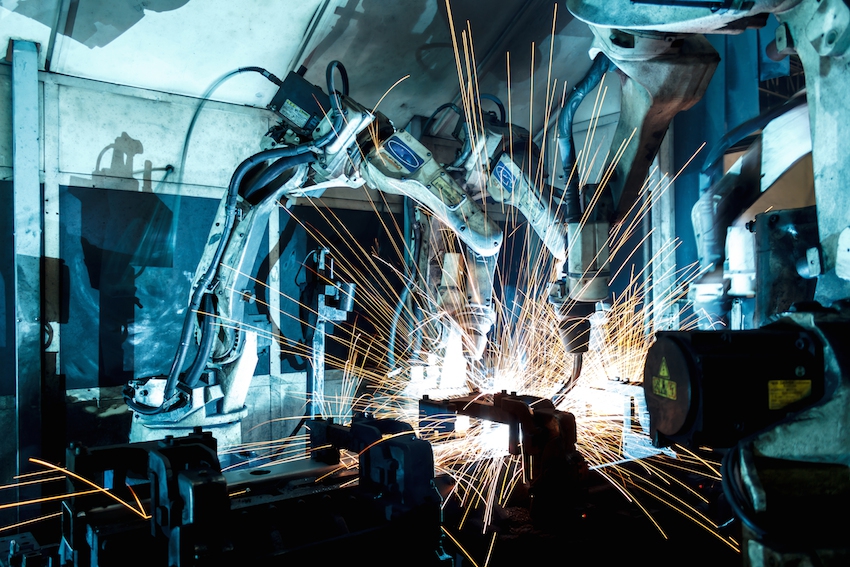
Move to welding robots inevitable: Frost & Sullivan
December 4, 2015
By Manufacturing AUTOMATION
 Photo: PJ66431470/iStock/Getty Images Plus
Photo: PJ66431470/iStock/Getty Images Plus Dec. 4, 2015 – Modernization needs in the competitive global market and the rising emphasis on energy efficiency are steering industries towards automation and driving the uptake of welding robots over manual welding methods, finds an analysis from Frost & Sullivan.
Robotic welding offers consistency and repeatability, which is vital in user industries, notes the market research company. While demand from the automotive and transportation industry will be robust, the electronics, heavy machinery and construction industries are also contributing to market growth, it adds.
The Frost & Sullivan analysis, Global Welding Robotics Fact Book, finds that the market earned revenues of $2.44 billion in 2014 and estimates this to reach $3.38 billion in 2020.
The significant improvement in energy efficiency that robotic welding brings to the table has spiked market demand in developed economies like North America and Europe, it finds.
“Strong demand from industries in Europe will drive the demand for arc and resistance welding robots,” said Frost & Sullivan Industrial Automation and Process Control research analyst Guru Mahesh. “The introduction of new materials such as composites and carbon fibres in industrial processes will further widen the scope for use of robots in handling, cutting and welding.”
While welding robotics have an established presence in developed economies, lack of awareness among end-users and preference for low-cost solutions hinder adoption in Asian countries such as India and China, notes the company. In addition to the limited understanding of the long-term benefits of these solutions, the availability of cheap manual labour restricts the demand for welding robotics in these regions, it adds.
“Vendors are working on increasing awareness on the various benefits of welding robots, including higher efficiency, repeatability and reliability,” observed Mahesh. “Conducting training and demonstrations through fairs and workshops will set the ball rolling for large-scale uptake of robotic welding across the globe.”
The analysis predicts that going forward, Middle East and Africa, India and China will be high-growth regions, and Asia-Pacific will see increased demand from non-automotive industries such as metals, machinery, electrical and electronics.
Advertisement
- Calibrating temperature measurement devices used in manufacturing
- Festo debuts ELGA-TB-G toothed belt axis